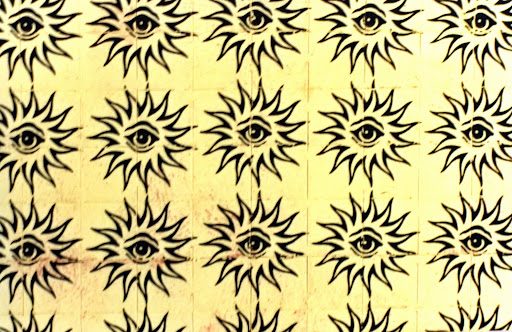Showing posts with label acid. Show all posts
Showing posts with label acid. Show all posts
Thursday, September 13, 2012
The Grateful Dead / Europe '72 Vol. 2 (2011)
This sequel to the Dead’s
triple-live long player Europe ‘72 is another chapter in the GD saga, and another commercial release of treasured
vault material from a band with enough vault material to keep the CDs rolling out for at least another 50 years. If you’re not a bootleg collector, then this release (especially when taken after digesting the aforementioned predecessor) is a good
cross-section of the Dead’s set first overseas tour. While the sound
quality is excellent and the sequencing is even good, I prefer to
listen to the 'original' Europe '72 for reasons I feel hard pressed to explain.
Admittedly, I once had an embarrassingly large collection of Dead tapes
so none of this material is new on me. I guess over the years, so many vault releases down the road, I've moved on from the knee-jerk reaction of, "wow, this sounds great compared to my supposed 2nd gen copy!" When I turn on a CD like this, I just hear a good quality rip of some shows that I've long been familiar with on tapes. So please don't be put off by my lukewarm reception, because the Dead were always better in 1972 and this is no exception. In fact, if you're totally new to the Dead, then I recommend you start here because the tracks represent what they did best: country, blues, and mind bending instrumental psychedelia. You don’t have to be a
Deadhead to enjoy the record, either, it should appeal to a wide audience, at least a wide audience of classic rock listeners. None of these tracks appear on
the predecessor, and all of them are welcome additions to the document. Notably, a '72 “Dark Star”
finally sees the light of day. Gems from
the first the first disc showcase the band’s transition into the short-song format introduced in 1971, cuts that demonstrate the
band’s willingness to shed the ‘inaccessible’ label while proving that
they hadn’t lost their any of their improvisational prowess. Also
included are two Pigpen tunes, “Chinatown Shuffle” and “Next Time You
See Me,” as well as a handful of other live staples. Pig's numbers were always my favorites, and 1972 was his last tour. Before I get too nostalgic, take a look at that cover. See? Ice cream kid is back!
Saturday, May 26, 2012
Pillars #2: Psychedelic Rock - The Teardrop Explodes / Wilder (1981)
It’s a fitting title:
Wilder is a more diverse, experimental, and, well, wilder effort than
the band’s debut. The songwriting goes down a darker path, too, both
lyrically and sonically. Dave Balfe’s keyboards and synth loops are more prominent than on Kilimanjaro, sometimes the
only accompaniment to a troubled, mumbling Cope. Haunting aural textures
and shifting dynamics create a lost, paranoid, and decidedly psychedelic atmosphere that is
supported by the album's fragmented track sequence. Cracking singles like side-two opener
“Passionate Friend” showcase punchy arrangements and act as buoys
between bouts of strangeness, while tracks like “Tiny Children” and “…And
The Fighting Takes Over” move into quieter, more nebulous spaces of
druggy, introspective beauty and confusion. I love the wry lyrics and paranoid mood of "Like Leila Khaled Said" and Police-ish multilayer drumming of "Seven Views of Jerusalem." The latest CD release has
bonus tracks that may interest serious fans, but they are nonessential and ultimately ruin the record’s continuity. Original
sequencing stops at “The Great Dominion,” a sweeping closer to the brilliant’s group’s short career. The song has an epic scope somewhere between a great accomplishment and a hint of what could have been. Either way, it's Cope's greatest moment on wax and a remarkable accomplishment for a pop record.
Wednesday, February 15, 2012
A meditation on musical cornerstones and pillars
In masonry, a cornerstone is the first stone to be laid in the foundation of a building. This is an important stone because it determines the position of all other stones in the structure, as well as the structure's position on the site. Throughout history and into more recent times, special and sometimes esoteric significance has been applied to the laying of a cornerstone. I once thought that a similar concept applied to various styles of music and specific musicians, composers, or recordings within the style. But that comparison isn't perfect, in fact, it's completely illegitimate. Preplanned construction is fundamentally different than a community of musicians all working independently, and at their own whim. Only later does anyone say they created a particular style. I guess my purpose is more like describing archetypes but to avoid dabbling in Hegelian philosophy, I'll draw a new comparison. How about... pillars. For anyone living under a rock, pillars are vertical structures that support other elements through static resistance. A style is like a structure, and the major works upholding the style are like pillars. There. Happy?
In the coming weeks I'll examine some of my favorite musical styles, and discuss recordings that I think are the pillars of those styles. I'll also review some recordings that have special value for being influential to other artists making similar music. I'll start with the PILLARS OF PSYCHEDELIC ROCK (sounds cool, doesn't it?), an international subgenre of rock and roll that I find endlessly fascinating. Stay tuned, please, and don't drop out... well, not yet, anyway.
In the coming weeks I'll examine some of my favorite musical styles, and discuss recordings that I think are the pillars of those styles. I'll also review some recordings that have special value for being influential to other artists making similar music. I'll start with the PILLARS OF PSYCHEDELIC ROCK (sounds cool, doesn't it?), an international subgenre of rock and roll that I find endlessly fascinating. Stay tuned, please, and don't drop out... well, not yet, anyway.
Subscribe to:
Posts (Atom)


